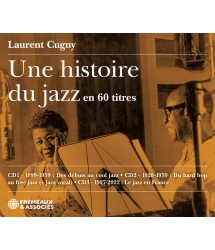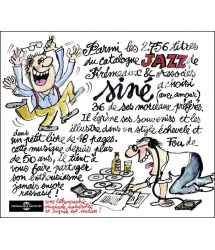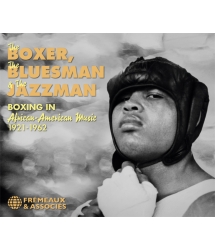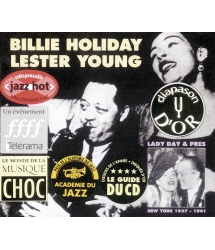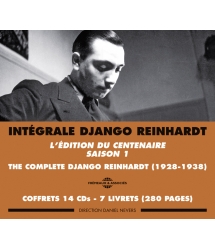- Our Catalog
- Philosophy
- Philosophers of the 20th century and today
- History of Philosophy (PUF)
- Counter-History and Brief Encyclopedia by Michel Onfray
- The philosophical work explained by Luc Ferry
- Ancient thought
- Thinkers of yesterday as seen by the philosophers of today
- Historical philosophical texts interpreted by great actors
- History
- Books (in French)
- Social science
- Historical words
- Audiobooks & Literature
- Our Catalog
- Jazz
- Blues
- Rock - Country - Cajun
- French song
- World music
- Africa
- France
- Québec / Canada
- Hawaï
- West Indies
- Caribbean
- Cuba & Afro-cubain
- Mexico
- South America
- Tango
- Brazil
- Tzigane / Gypsy
- Fado / Portugal
- Flamenco / Spain
- Yiddish / Israel
- China
- Tibet / Nepal
- Asia
- Indian Ocean / Madagascar
- Japan
- Indonesia
- Oceania
- India
- Bangladesh
- USSR / Communist songs
- World music / Miscellaneous
- Classical music
- Composers - Movie Soundtracks
- Sounds of nature
- Our Catalog
- Youth
- Philosophy
- News
- How to order ?
- Receive the catalog
- Manifesto
- Dictionnary











- Our Catalog
- Philosophy
- Philosophers of the 20th century and today
- History of Philosophy (PUF)
- Counter-History and Brief Encyclopedia by Michel Onfray
- The philosophical work explained by Luc Ferry
- Ancient thought
- Thinkers of yesterday as seen by the philosophers of today
- Historical philosophical texts interpreted by great actors
- History
- Books (in French)
- Social science
- Historical words
- Audiobooks & Literature
- Our Catalog
- Jazz
- Blues
- Rock - Country - Cajun
- French song
- World music
- Africa
- France
- Québec / Canada
- Hawaï
- West Indies
- Caribbean
- Cuba & Afro-cubain
- Mexico
- South America
- Tango
- Brazil
- Tzigane / Gypsy
- Fado / Portugal
- Flamenco / Spain
- Yiddish / Israel
- China
- Tibet / Nepal
- Asia
- Indian Ocean / Madagascar
- Japan
- Indonesia
- Oceania
- India
- Bangladesh
- USSR / Communist songs
- World music / Miscellaneous
- Classical music
- Composers - Movie Soundtracks
- Sounds of nature
- Our Catalog
- Youth
- Philosophy
- News
- How to order ?
- Receive the catalog
- Manifesto
- Dictionnary
LA QUINTESSENCE DU JAZZ
Ref.: FA016
EAN : 3700368480687
Artistic Direction : ALAIN GERBER
Label : Frémeaux & Associés
Total duration of the pack : 1 hours 51 minutes
Nbre. CD : 2
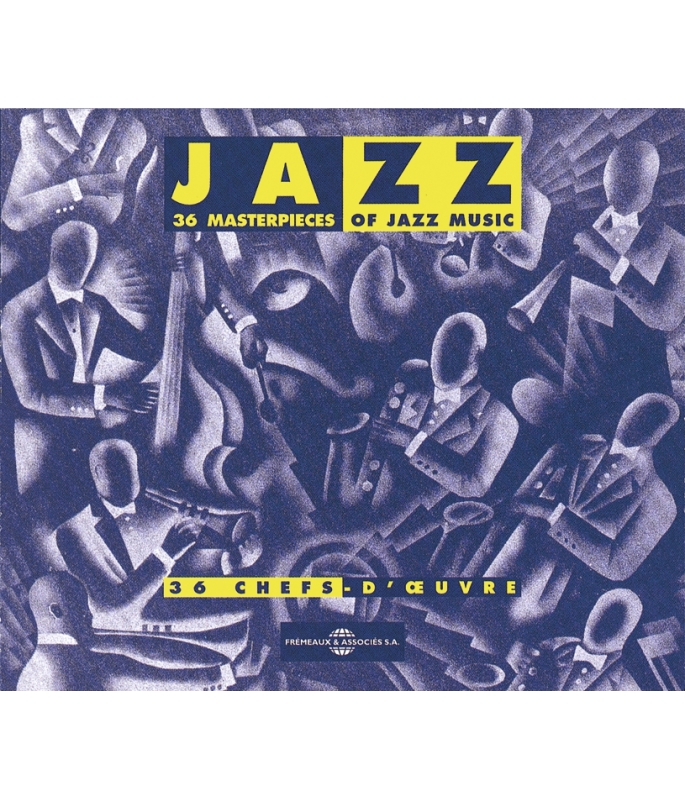
LA QUINTESSENCE DU JAZZ
- - DIAPASON D’OR
- - ÉVÉNEMENT ƒƒƒƒ TÉLÉRAMA
- - CD D’ÉMOI JAZZ MAGAZINE
- - * * * * JAZZMAN
- - DISQUE D’OR LE GUIDE DU CD
LA QUINTESSENCE DU JAZZ
The Quintessence of jazz distilled into 36 masterpieces. From Louis Armstrong to Lester Young via Billie Holiday, Sidney Bechet, Django Reinhardt, and many others… This 2-CD set includes a 20 page booklet with both French and English notes.

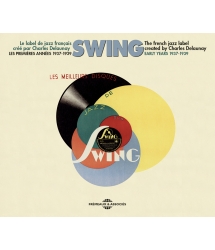
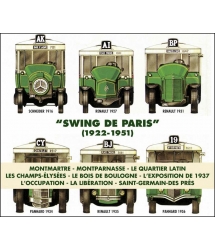
-
PisteTitleMain artistAutorDurationRegistered in
-
1WEST END BLUESLOUIS ARMSTRONGJ OLIVER00:03:171928
-
2DIPPER MOUTH BLUESJOE OLIVERJOE OLIVER00:02:271923
-
3BACK WATER BLUESB SMITHB SMITH00:03:171927
-
4CAROLINA SHOUTJAMES P JOHNSONJAMES P JOHNSON00:02:441921
-
5REALLY THE BLUESSIDNEY BECHETM MEZZROW00:03:361938
-
6ORIGINAL JELLY ROLL BLUESJELLY ROLL MORTONF MORTON00:03:031926
-
7NEW KING PORTER STOMPFLETCHER HENDERSONFLETCHER HENDERSON00:03:041932
-
8SINGIN THE BLUESBIX BEIDERBECKEC CONRAD00:02:571927
-
9JACK HITS THE ROADJACK TEAGARDEND BOWMAN00:02:571940
-
10FIFTY SEVEN VARIETIESEARL HINESEARL HINES00:03:091928
-
11I M GONNA SIT RIGHT DOWN AND WRITE MYSELF A LETTERFATS WALLERF AHLERT00:03:291935
-
12I KNOW THAT YOU KNOWWILSONVINCENT YOUMANS00:02:211941
-
13I WISH I WERE TWINSART TATUMJOSEPH MEYER00:02:161936
-
14LIZACHICK WEBBGEORGE GERSHWIN00:02:461938
-
15I MUST HAVE THAT MANBILLIE HOLIDAYJ MC HUGH00:02:521937
-
16CHEATIN ON MEJIMMIE LUNCEFORDPOLLACK00:02:451939
-
17MINOR SWINGDJANGO REINHARDTDJANGO REINHARDT00:03:121937
-
18SOLID OLD MANREX STEWART AND HIS FEETWARMERREX STEWART00:03:021949
-
PisteTitleMain artistAutorDurationRegistered in
-
1KO KODUKE ELLINGTONDUKE ELLINGTON00:02:431940
-
2CONCERTO FOR COOTIEDUKE ELLINGTONDUKE ELLINGTON00:03:211940
-
3HODGE PODGEJOHNNY HODGESJOHNNY HODGES00:02:361938
-
4CRAZY RHYTHMCARTERJOSEPH MEYER00:02:591937
-
5OUT OF NOWHEREHAWKINSJOHNNY GREEN00:03:161937
-
6YOU SE A VIPERSTUFF SMITHS SMITH00:03:051938
-
7JONAH JOINS THE CABJONESCAB CALLOWAY00:02:341941
-
8ONE O CLOCK JUMPCOUNT BASIECOUNT BASIE00:03:041937
-
9FIESTA IN BLUECOUNT BASIEJ MUNDY00:03:051941
-
10CAVALCADE OF BOOGIEALBERT AMMONSJOHNSON00:02:571938
-
11A TISKET A TASKETELLA FITZGERALDELLA FITZGERALD00:02:331938
-
12WHEN LIGHTS ARE LOWLIONEL HAMPTONBENNY CARTER00:02:111939
-
13FRONT AND CENTERJOHN KIRBY SEXTETCHARLIE SHAVERS00:02:541939
-
14AFTER YOU VE GONEROY ELDRIDGEJ T LAYTON00:02:591939
-
15I NEVER KNEWBIG SID CATLETTTED FIORITO00:03:071943
-
16I WANT A LITTLE GIRLYOUNGM MANCHER00:02:471938
-
17SWEET LORRAINENAT KING COLEC BURWELL00:02:561940
-
18SWING TO BOP (CHARLIE S CHOICE)CHARLIE CHRISTIANTOPSY00:08:551941
DISQUE 1
1. West End Blues (J. Oliver), LOUIS ARMSTRONG & His Hot Five. Armstrong (tp, voc), Fred Robinson (th), Junay Strong (cl, ts), Earl Hines (p), Mancy Carr (bjo), Zany Singleton (dm), Chicago, 28 juin 1928. Okeh W. 400967-B
2. Dipper Mouth Blues (J. Oliver et L. Armstrong). KING OLIVER's Creole Jazz Band. Oliver, Louis Armstrong (c), Honoré Dutrey (tb), Johnny Dodds (c), Lil Hardin (p), Bill Johnson (bjo, voc), Baby Dodds (dm). Richmond, 6 avril 1923. Gennett 11389-B
3. Back Water Blues (B. Smith). BESSIE SMITH (voc), James P. Johnson (p). New York City, 17 février 1927. Columbia 143491-1
4. Carolina Shout (J.P. Johnson). JAMES P. JOHNSON (p). New York City, 18 octobre 1921. Okeh 70260-C
5. Really The Blues (M. Mezzrow). SIDNEY BECHET with Tommy Ladnier & his Orchestra, Ladnier (tp), Bechet (d, ss), Milton "Mezz" Mezzrow (d), Cliff Jackson (p). Teddy Bunn (g), Elmer James (b), Manzie Johnson (dim) New York City, 28 novembre 1938. Bluebird BS 030319-1
6. Original Jelly Roll Blues (F. Morton). JELLY ROLL MORTON's Red Hot Peppers. Morton (p, arrangement), George Machell (ct), Kid Ory (tb), Omer Simeon (cl), Johnny St. Or (g), John Lindsay (b), Andrew Hilaire (dm). Chicago, 16 décembre 1926. Victor BVE 37256-2
7. New King Porter Stomp (F. Henderson, d'après F. Morton). FLETCHER HENDERSON & his Orchestra. Henderson (p, arrangement), Russell Smith, Rex Stewart, Bobby Stark (ip), J.C. Higginbotham, Sandy Williams (tb), Hilton Jefferson), Russell Procope (as), Coleman Hawkins (ts), Freddy White (g), John Kirby (b), Walter Johnson (dm). New York City, 9 décembre 1932. Columbia/Okeh W 152 325-1
8. Singin' The Blues (C. Conrad/ R. Robinson). BIX BEIDERBECKE with Frank Trumbauer & his Orchestra. Beiderbecke (ct), Trumbauer (C melody sax), Milf Mole or Bill Rank (b), Jimmy Dorsey (cl), Paul Mertz (p), Eddie Lang (), Chauncey Morehouse (dm). New York City, 4 février 1927. Okeh W 80393-B
9. Jack Hits the Road (D. Bowman), JACK TEAGARDEN, PEE WEE RUSSELL, with Bad Freeman & his Famous Chicagoans. Teagarden (th, voc), Russell (cl), Freeman (ts), Dave Bowman (p), Eddie Condon (g), Mort Stuhlmaker (b), Dave Tough (dm). New York, 23 juillet 1940. Columbia 27684-1
10. Fifty-Seven Varieties (E Hines), EARL HINES (p). Chicago, 17 décembre 1928 Okeh 402219
11. Em Gonna Sit Right Down And Write Myself A Letter (FE. Ahlers/ Young), FATS WALLER & his Ryhthm. Waller (p. voc), Herman Autrey (tp), Rudy Powell (cl), Albert Casey (g), Charles Turner (b), Harry Deal (d) New York, 8 mai 1935, Victor BS 89764-1
12. I Know That You Know (V. Youmans/A Caldwell). TEDDY WILSON (p), Al Hall (b). J.C. Heard (d) Chicago, 11 avril 1941. Columbia CCD-3686-1
13. I Wish I Were Twins (J Meyer/F. Loesser-E. Delange) ART TATUM (p). New York C, dire 1955. Standard Transcription
14. Liza (G. Gershwin /L Gerswhin). CHICK WERB & his Orchestra Wehb (dm), Mario B, Bobby Stark, Ta Jordan (tp), Sandy Williams, Nat Story, George Matthews (th), Chauncey Haughton (das), Los Jundam (a), Ted McRae, Wayman Carver (s), Tommy Hallford (p), Bobby Johnson (g), Beverley Peer (b), Bey Carter (arrangement). New York, 3 mai 1938. Decca 63708-A
15. I Must Have That Man (J. McHugh /D. Fields). BILLIE HOLIDAY with Teddy Wilson & his Orchese Holiday (voc), Wilson (p), Buck Clayton (tp), Benny Goodman (ch), Lester Young (h), Freddie Green (3) Waller Page (h). Jo Jones (dim). New York City, 25 janvier 1937 Brunswick B-20571-1
16. Cheatin' On Me (M. Pollack/J. Yellen). JIMMIE LUNCEFORD & his Orchestra. Eddie Tompkins (p, voc), Paul Webster (tp), Sy Oliver (tp, voc, arrangement). Elmer Grumbley, Russell Bowles (th) James "Try Young (th, voc), Willie Smith (as, voc), Earl Carruthers, Ted Buckner, Dan Groom (as) Joe Thomas (h), Edwin Wilc (p). Al Norris (g), Moses Allen (b). Jimmy Crawford (d) New York City, 3r 1999 Vocation Okeh 23906-1
17. Minor Swing (D. Reinhardt et S. Grappelly). DJANGO REINHARDT STEPHANE GRAPPELLY (erbographe d'époque) avec le Quintette do Hot Chib de France Reinhardt (), Grappelly (vi), Joseph Reinhard, gine Ves (g), Louis Vola (b) Paris, 25 novembre 1957. Swing OLA 1990-1
18. Solid Old Man (R. Stewart, B. Taylor, B. Bigand) REX STEWART & his Feotwarmors, with BARNEY BIGARD, Stewa (c), Bigard (cl, dm), Django Reinhardt (g), Bally Taylor (b). Parts, Saril 1939 S 00W 67-1
DISQUE 2
1. Ko-Ko (D. Ellington) DUKE ELLINGTON & his Orchestra. Ellington (p, arrangement), Wallace Jones, Rex Stewar Cootie Williams (tp), Lawrence Brown, Joe "Tricky Sam" Nanton, Juan Tizol (th), Barney Bigard (ci, ts), Joh Hodges, Otto Hardwick (as), Ben Webster (ts), Harry Carney (bars), Fred Guy (g). Jimmy Blanton (b), Sonny Gree (dm). Chicago, 6 mars 1940, Victor BS 044.889-1
2. Concerto For Cootie (D. Ellington). COOTIE WILLIAMS with Duke Ellington & his Orchestra. Même person que pour Ko-Ko. Chicago, 15 mars 1940. Victor BS 049.016-1
3. Hodge Podge (D. Ellington et J. Hodges), JOHNNY HODGES & his Orchestra. Hodges (25), Cootie Williams (p), Lawrence Brown (th), Harry Carney (bars), Duke Ellington (p), Billy Taylor (b), Sonny Greer (dm). New York C 19 décembre 1938, Vocalion M. 951-1
4. Crazy Rhythm (J. Meyer/RW. Kahn). BENNY CARTER with Coleman Hawkins & his All Star Jam Band. Carter (as, arrangement), Hawkins (ts), André Ekyan (as), Alix Combelle (ts), Stéphane Grappelly (p). Django Reinhard (g), Eugène d'Hellemmes (b), Tommy Benford (dm). Paris, 28 avril 1937. Swing OLA 1743-1
5. Out of Nowhere (J.W. Green/E. Heyman). COLEMAN HAWKINS & his All Star Jam Band. Même personnel et même date que pour Crazy Rhythm. Gramophone OLA 1744-1
6. You're A Viper (S. Smith). STUFF SMITH & his Onyx Club Boys. Smith (vin, voc), Jonah Jones (p, voc), James Sherman (p), Bobby Bennett (g). Mack Walker (b), Cozy Cole (dm). New York City, 13 mars 1936, Vocalion 18820-1
7. Jonah Joins The Cab (C. Calloway). JONAH JONES with CAB CALLOWAY & his Orchestra Jones (tp), Calloway (leader), Dizzy Gillespie, Lamar Wright (tp), Tyree Glenn, Quentin Jackson, Keg Johnson (tb), Jerry Blake, Hilton Jefferson, Andrew Brown, Chu Berry, Walter Thomas (anches), Benny Payne (p), Danny Barker (g), Milt Hinton (b), Cozy Cole (dm), Andy Gibson (arrangement). New York City, 5 mars 1941. Okeh 29867
8. One O'Clock Jump (C. Basie). COUNT BASIE & his Orchestra. Basie (p), Buck Clayton, Ed Lewis, Bobby Moore (tp), George Hunt, Dan Minor (tb), Earle Warren (as), Herschel Evans, Lester Young (ts), Jack Washington (ban), Freddie Green (g), Walter Page (b), Jo Jones (dm). Arrangement "oral", plus tard fixé par Buck Clayton, New York City, 7 juillet 1937. Decca 62332-A
9. Fiesta In Blue (J. Mundy/B. Goodman). BUCK CLAYTON with Count Basie & his Orchestra Clayton (tp), Basic (p), Ed Lewis, Harry Edison, Al Killian (tp), Robert Scott, Ed Cuffe, Eli Robinson (tb), Tah Smith, Earle Warren (as) Don Byas, Buddy Tale (ts), Jack Washington (bars), Freddie Green (g), Walter Page (b), Jo Jones (dm). New York City, 24 septembre 1941. Okeh 31354-1
10. Cavalcade of Boogie (P. Johnson, M.L. Lewis et A. Ammons). New York Cay, Carnegie Hall 13 décembre 1958
11. A-Tisket, A-Tasket (E. Pigerald et V. Alexander) ELLA FITZGERALD with Chick Webb & his Orchestra s Fitzgerald (voc), Webb (dm) et même personnel que pour Liza Disque 1, plage 14). Toefoes, Gea Bushell remplace Chauncey Haughton. Arrangement Van Alexander. New York, 3 mai 1998 Decca 65695-4
12. When Lights Are Low (B. Carter/S Williams). LIONEL HAMPTON & his Orchestra. Hampton (th), D Gillespie (tp), Benny Carter (as, arrangement), Coleman Hawkins, Chu Berry, Ben Webster (s), Cyde Hart (p). Charlie Christian (g), Milt Hinton (b), Cory Cole (dm). Chicago 9 septembre 1999. Victor BS 041406-1
13. Front And Center (C Shavers et J. Kirby). JOHN KIRBY sextet Kirby (b), Charlie Shavers (p), Banter Bailey (d). Russell Procope (as), Billy Kyle (p). O'Neil Spencer (dm). New York City, 28 juillet 1959 Vocalion/Okeh W 24945-A
14. After You've Gone (T. Layton/H. Creamer). ROY ELDRIDGE & his Orchestra. Eldridge (tp), Scoops Carry, Joe Eldridge (as), Dave Young (ts). Teddy Cole (p). John Collins (g), Truck Parham (b). Zatty Single (dim) Chicago, 28 janvier 1937. Vocalion C. 1798-2
15. I Never Knew (T. Fiorito/G. Kahn), SIDNEY CATLETT with the Lester Young Quartet. Catlett (id, brushes), Ying (ts), Johnny Guarnieri (p), Slam Stewart (b, voc). New York City, 1943 Keynote H12-2
16. I Want A Little Girl (M. Mancher/B. Moll). LESTER YOUNG with the Kansas City Six Young (d-metal), Buck Clayton (tp), Eddie Durham (elec g), Freddie Green (g). Walter page (b), Jo Jones (dim). New York Chy 27 septembre 1938 Commodore P 23421-1
17. Sweet Lorraine (C. Burwell/M. Parish). NAT KING COLE "ro" Cole (p, voc), Oscar Moore, Joy Mower (g). Wesley Prince (b). Los Angeles, 6 décembre 1940. Decca DLA 2255-A
18. Swing To Bop (Charlie's Choice) (d'après Topsy, d'Eddie Durham), CHARLIE CHRISTIAN (g). Joe Gay (p). Kenny Kersey (p), Nick Fenton (b), Kenny Clarke (dm). New York City. "Minton's Playhouse", 12 m 1941.
Our story begins with Louis Armstrong (1901-1971) Osoaring skywards on West End Blues and, within some 70-odd noirs, taking all recorded jazz (not yet 12 years old) along with him into a seventh heaven. In his defiance of gravity, "Satchmo" bad just invented the most miraculous of all catapults. This trumpet introduction, what Lucien Malson and Christian Bellest have called "this dazzling solo flight", consummated the divorce from the concept of collective Improvisation that had hitherto reigned supreme over New Orleans jazz. A concept now relegated to the final, orgiastic ride-out of the closing chorus.
Five years earlier, Armstrong had been a member of the Creole Jazz Band led by Joe "King" Oliver (1885-1938), a group that rarely strayed from the straight-and-narrow of the old code of polyphony. And yet it was in this very context that the "King" of cornettists, one April day of 1923, forged his most famous solo on Dipper Mouth Blues, having first danced a little collective polka with the Johnny Dodds clarinet. A solo at once so brutish and gracious, as if granite had begun to float. At once so aggressive and tender, that all these years later we still hang upon every note in eager anticipation of that legendary Bill Johnson exhortation: "Oh, play that thing!"
Armstrong recorded a number of sides with Bessie Smith (1895-1937), generally sombre performances heavy with the gentle tragedy of the blues. A formidable partnership. Bessie had fought free of misery, the ravages of love and liquor, to enjoy a brief, glorious career before sinking back into almost the same misery as before. Rich in the harsh experience of life, she wrote many of her songs herself, and one confession of hers seems to speak for the entire Afro- American community. "If the blues was whisky, baby, I'd be drunk all the time." She composed both words and music of Back Water Blues, a lament triggered by the terrifying Mississippi floods when it rained five days and the sky timed dark as night"
James Price Johnson (1894-1955), the pianist who accompanies her on this intensely painful blues, is-more than Willie The Lion" Smith and those two precursors of the style, Eubie Blake and Luckey Roberts- the father of "stride piano". The so-called stride rhythm is imparted by a left hand "striding between a bass note struck on the strong beats (1 and 3) and a chord struck on the weak beats (2 and 4). Legend has it that you couldn't be considered a member of the family until you could play James P. Johnson's Carolina Sbout note for note in your sleep. A work that the patriarch himself had recorded on only his second visit to the studios.
When that particular piece was waxed in 1921, Sidney Bechet was just 24 years old. Or maybe 30, for jazz historians have not yet been able to agree on his exact year of birth. While still a kid in short trousers, Bechet had played in outfits headed by such legendary figures as Freddy Keppard, Buddy Petit and John Robichaux, before moving on to join the King Oliver band while the century was still in its mid-teens. Right up until his death in 1959, Bechet remained a magnificently flamboyant performer, even melancholy pieces showering sparks when given the Bechet treatment. Among numerous pearls, I have chosen Really The Blues. First, because it features the great man on both clarinet and soprano-saxophone; and second, because it is archetypal Bechet
For Philippe Baudoin, Original Jelly Roll Blues "constitutes a veritable landmark in jazz history, since it would appear to be the first jazz arrangement copyrighted at the Library of Congress, filed on 22 September 1915, nearly 18 months before the first jazz recording by the Original Dixieland Jazz Band. (...) It requires repeated listening and careful dissection to absorb all its subtle riches. (...) An unrivalled organiser,... Morton, when given the musicians he needed, was expert at communicating to them his very personal musical vision. In these circumstances he was able to establish a perfect marriage between the arranged and the When, in 1935, Webb saged a girl singer by the name of Ella Fitzgerald, Billie Holiday (1955-1959) had recorded but two titles She had, however, already earned the admiration of numerous musicians, among them Teddy Wiben, who, that same year, would invite her into the studies for what turned out to be the beginning of a long association. Their common purpose to provide material for the juke bones ied by one Homer Capehart. On 25 January 1957, Lester Young joined them for the first time, hence launching one of the most fertile and most troubling parmerships is jazz history the partnership between "Lady Day" and the "Pres" Mast Have That Man, which also offers one of Benny Goodman's finest solos, heralds a whole cluster of recordings by this legendary couple (cf. FA 015, BILLIE HOLIDAY-LESTER YOUNG/Ed. Frémeaux & Ass).
While Fats the entertainer, the universal comforter, was capable of elegance, Teddy Wilson (1912-1986) was elegance itself. Brought up on Hines and Waller, marked by the classical culture imparted by the teaching of Walter Gieseking, Wilson innovated with all the assurance of someone reciting a lesson by beart. His audacious playing reveals nothing of the natural pain of learning or the fahering pursuit of experience. For here is an aristocrat of the piano, whose impertinence has infinite charm, whose wildest outbursts remain immaculately calm and controlled. Never has an innovator exuded greater powers of cool seduction Apart from which, the man is a breathtaking wizard of the keyboard, witness / Know That You Know, a pianistic tour-de-force he makes seem like child's play
just that I sleep slowly), the hero of Jack Hits The Road, Jack Teagarden (1904-1964) hung out with the Chicagoans from 1928 onwards, a constantly faithful companion. Between a couple of beers, two squeaky notes from Pee Wee and a rocking chair, he quite simply revolutionised the trombone And probably never even realised
improvised, the collective and the solo, bence striking a balance that guaranteed swing, musicality and, above all, refreshing spontaneity"
According to Gunther Schuller, New King Porter Stomp "far outclasses the King Porter Stomp recorded eight months later (and) is possibly the greatest recording Fletcher Henderson's band ever made." Composed by Jelly Roll Morton in 1906 (so they say) as a tribute to his pianist friend Porter King, the piece was first recorded by its composer in 1923 under the side King Portor (sic), and labelled as "A Stomp A pioneer of orchestral jan, and of the riffs and section work that would so typify the Swing Era, Fletcher Henderson (1897-1952) figures in jazz history as a retiring man who exerted greater influence on the work of others than he did control over his own
While acceping that Cheatin" On Me does unt rank among the definitive Jimmie Lunceford (1902-1947), I wanted to include it for personal reasons. It is a side I first discovered many moons ago on a 10-inch Philips LP compied by Born Vian. And it taught me one of jar's ultimate secrm: the a possible to be seriously light-hearted at once ins and aware Which is a message I should like to pass on This ex-college teacher and his boys pretend nothing matters as long as the music swings. They stir no waves but do set up s sort of easy, swaying roll. Sy Oliver is at the helm, and the band's vocal trio (turned quartet with the addition of Trummy Young) confirms the impression that all is plan
But when it came to virtuosity, none could beat Art Tatum (1909-1956), who maybe even went too far. Was he perhaps himself overwhelmed by the desire to overwhelm, overlooking the fact that technical prowess sometimes arouses more admiration than love? The truth, nevertheless, is that Tatum's playing makes a fairy-tale story, for here is a man who actually seems to perform the impossible. An artist of terrifying ability, he once inspired Fats Waller to acknowledge his presence by announcing "God is in the house tonight/Wish / Were Twins, one of his less familiar works, is a majestic demonstration of stride gone mad.
Partner of Louis Armstrong on West End Blues, on which he excels, Earl Itines (1903-1983) headed a long line of pianists of whom, today, Martial Solal is a worthy heir. A commentist in his young days, later influenced by Satchmo, Hines created a style of which the turns of phrase are more reminiscent of trumpet than of piano. But this remarkable artist was, above all, a sworn enemy of routine, a master of the controlled skid, an amxing virtuoso in the negotiation of daring variations, abrupt about-turns and tricky evasions, a fearless explorer of unexpected tangents. His best solos Fifty Seven Varieties indisputably ranks among thein are interlocking intrigues, layered improvisations that unfold into perfectly constructed, marvellously coherent discourses.
Portrayed as an artist who lived under a curse, Bix Beiderbecke (1903-1931) experienced moments of divine grace. Brief periods of staggering lucidity alterated with prolonged periods of haze induced by the speakeasies of the Prohibition era. Yet, despite his often deplorable physical state, hix nearly always managed to extract poetry from his cornet As he does here on Singin' The Blues, alongside friend and accomplice Frank Trumbauer "Tram", as he was affectionately known, the forerunner of all "cool" saxophonists, blows a solo that left Lester Young in no doubt about his own future direction "That's where I went
This great secret was certainly an mystery to Django Reinhardt (1910-1955), aur to a Stéphane Grappelli not yet 30 when the two of them recordes Minor Sarting tagether Into this theme west the body and soul of their music, the essence of an era at once ephemeral and eternal then the imperfections of Minor Swing seem perfect. It is a piece anchored in the reality of life.
Despite Zutty Singleton, Baby Dodds (cf. CDI, Tracks 1 and 2) and a handful of others, drummers tended to be considered mere accessories within the band. Manipulators sailing of hardware that had no real prestige. It was Chick Webb (1909-1939) who was first going to attract public admiration, opening the way for Gene Krupa and others. Those who heard and saw Webb were left in doubt be was the man in the driving seat. His exciting breaks were soon spurring the dancers of the Savoy Ballroom, the "House of Happy Feet", to unbelievable exploits. And the way he underpinned his hand from within made him the model for all big-band drummers. Liza features one of his most expansive personal displays on recordi
A protégé of James P. Johnson, and winner of an amateur compeution at which he had had the temerity to play Carolina Sbout, Fats Waller (1904-1943) turned clown through an excess of tenderness and modesty. Mistrustful of the first quality, even to the extent of ridiculing it at every opportunity, he cherished the second, unlike most who pretend to its virtues. With barely evident but touching obstinacy, he cultivated the frankly humorous approach, the swing-above-all philosophy Every now and then, despite himself, he betrayed just a touch of blue. Which is what makes such untypical pieces as I'm Gonna Sit Right Down And Write Myself A Letter so revealing, so indispensable.
As soon as they were released, records by Bis and Tram were eagerly gobbled up by the gang of young whites whose destiny it was to put Chicago Jazz on the map. Among them, Bud Freeman Cauthor of a solo on a 1935 version of Dinab that Lester Young would describe as the first example of the Stan Getz style), Pee Wee Russell (who seemed to lurch from note to note with magnificem assurance), Eddie Condon (one of the top rhythm guitar specialists after Freddie Green), and Dave Tough (a drummer of approximate technique but admirable perünence). A Southemer in both origin and nonchalance (it's not that I stay in bed too long,
(1) The technicians bearing him warming up are said to have started at war without warning him. In fact, it seems certain the microphone was etched on after the beginning of the piece thus miting the opening bars (Daniel Nevers)
Sometimes confounding reality. Django wove magic that enchanted all those lacky muugh to creas his path. One fine
spring day, three Americans in Paris, temporarily deserting the ranks of their Duke, learned something about themselves from this notoriously taciturn gypsy For that was the day Rex Stewart (1907-1967), Barney Bigard (1906-1980) and bassist Billy Taylor discovered they were capable of producing something as simple, as powerful, as fraternal and as terrifyingly effective as Solid Old Man
As we open CD2, it is the turn of the Duke himself (1899- 1974) to surpass himself, turning out a performance even the most optimistic could hardly have anticipated. For Ko- Ko was to classic jazz what West End Blues had been to traditional jazz an apotheosis: A 12-bar blues marked by the powerful voices of Joe "Tricky Sam" Nanton (trombone) and Jimmy Blanton (bass), it ordains the use of dissonant harmony in Afro-American music. At the same time, it illustrates two aesthetic paradoxes the very key to all Ellingtonia: that the greatest unity stems from the broadest diversity, and that complexity need not mean complication. André Hodeir, for whom this piece represents "the most perfect example of a language "then at the peak of its development", has devoted an entire chapter to a work recorded by the same orchestra just nine days later. A feature for the expressionist trumpet of Cootie Williams (1910-1985), more accessible than Ko-Ko because more lyrical and melodic, Concerto For Cootie strikes Hodeir as possessing the same purity, rigour and cohesion. In short, as being a work of exceptional musical riches. "Nothing is misplaced or superfluous", both soloist and orchestra "have something to say, they say it well, and what they say is beautiful."
Every jazz aficionado will remember that Duke Ellington admitted he was "concerned with a highly personalized kind of music (...) written to suit the character of an instrumentalist." Duke staged the work of what he called his "prima donnas". They, for their part, contributed by providing impromptu responses within the framework of the script Hence, Ellington expanded the world of Johnny Hodges (1906-1970), who in turn expanded the world of
Duke Ellington. Which explains the homogeneity and impac of performances such as Hodge Podge, recorded under h own name by the most brilliant (and most poignant) alto- saxophonist of the day, but with the all-important backing of the master himself and some key members of the troupe
Hodges also played soprano-saxophone, in emulation of his avowed master, Bechet. Altoist Benny Carter, his crown- prince, has occasionally turned bis hand to trumpet and clarinet. Yet another jazz artist to be nicknamed "The King" Carter (born in 1907 and still going strong) has shown that his artistic talents extend even further, to both bandleading and arranging (cf. the Chick Webb recording of Liza). Quite incidentally, the chart of Crazy Rhythm is his, but its inclusion here is more in recognition of its alto solo (sandwiched between superb contributions from Alix Combelle and Coleman Hawkins). How can we not admire such work: its arabesques, smooth flow, implacable logic. wonderful tension and sheer jubilation?
This time under the leadership of tenor-sax giant Coleman Hawkins (1904-1969), that same session with Django on guitar produced one of the great man's major improvisations. When dealing with Hawk, tyranny of habit normally dictates the choice of his unsurpassable, October 1939 version of Body And Soul. But there are many arguments in favour of other performances, among them When Lights Are Low (with Lionel Hampton, cf. CD2, Track 12), the foregoing Crazy Rhythm, or the Paris Honeysuckle Rose. Or, of course, the present Out Of Nowhere, which finds Hawk gliding majestically over his chosen territory
Where Hawkins is a nobleman, Stuff Smith (1909-1967) is 1 ruffian, a sort of exuberant lout A bar-room violinist, he frenetically maltreats an instrument conceived for its delicacy. It's not even scrape, but rape-and it swings like mad! Under his wild fingers, wrong notes take on a new meaning, accuracy becomes irrelevant. With pieces like You'se A Viper, Smith triumphantly held court at New York's Onyx Club, assisted by able instrumentalists who got stuck in accordingly. Here: Jonah Jones and Cory Cole.
Jones (born in 1909), after service with Lunceford, Henderson and Carter, joined the Cab Calloway orchestra in 1941. A piece generally considered one of that group's masterpieces, Jonab Joins The Cab celebrates the event in a mood of perfectly controlled jollity. Cab's orchestras from the late 20s to the late '40s tended not to follow their leader in his eccentricities, which meant that at their best they could rival just about any band in sight
In a sense, however, no one could rival either Ellington or Count Basie (1904-1984), who certainly avoided any attempt to rival each other. Blasie's One O'Clock Jump is not necessarily the track I would insist on having on my desert island, but- apart from featuring the contrasting styles of Herschel Evans and Lester Young, plus an all-too-rare piano. excursion from Basie-it does neatly represent the orchestra's overall output. Lucien Malson thought it an important enough part of the orchestra's manifesto for him to grant it the honour of an extensive bar-by-bar analysis (in Des musiques de jazz, Parenthèses).
Buck Clayton (1911-1991) comes out of that analysis with flying colours, thanks to his "soft, round tone" and "eloquent style". The trumpeter had joined Basie the year before, after a spell working in Shanghai. The Count liked him ("a nice congenial cat that knew all the answers), and for his part Buck would stick by his new boss until Uncle Sam dragged him away in 1943 Originally, the delicious Fiesta In Blue had been written for Cootie Williams, who had recorded it with Benny Goodman the previous February. But Clayton takes it over, transforming it into a "Concerto for Buck on which he displays all the qualities that earned him such admiration: distinction, finesse, charm, balance, rigour, concision, assurance, poetry and feeling (a mix otherwise unique to his contemporary, Bill Coleman).
Clayton, like Basie, had taken part in John Hammond's "From Spirituals to Swing" concerts. The first of these, in late 1938, had witnessed the dramatic comeback of boogie woogle, an idiom more or less forgotten since the 1924-28
heyday of Jimmy Blythe, Pinetop Smith and Meade Lux Lewis (1905-1964). Lewis it was who found himself opening the Hammond show along with two other masters of the style, Albert Ammons (1907-1949) and Pete Johnson (1904- 1967). Johnson shared a Steinway with Lewis, while Ammons attacked a sturdy old upright. Their collective performance entitled Cavalcade of Boogie almost stirred a riot, at the same time launching a boogie craze that look America by storm Boogie woogie is still a guaranteed gallery-rouser today
Another memorable sensation was caused by Ella Fitzgerald (born in 1918) with her rendering of 4-Tisket, A-Tasket, a sort of nursery rhyme she had put together with arranger Al Feldman (later known as a bandleader under the name of Van Alexander). This was the first of the Chick Webb. orchestra's hits, and Ella's biggest personal success until her 1945 Flying Home. Rarely has an artist reaped such dividends by reverting to childhood. However, it's true that, in art, childhood is one of the least accessible conditions, and it's certainly true that no one has been able to beat Ella at this particular game.
Signature tune of Benny Carter and a key piece in the oeuvre of Lionel Hampton (born in 1909), When Lights Are Low marks a culminant point in the evolution of the rhythmic concepts inherited from Baby Dodds and Zutty Singleton. It serves, too, as an emblem of swing, a showcase of classicism. Although part of the act. Dizzy Gillespie, Chu Berry, Ben Webster and Charlie Christian remain in the shadows, whereas composer Carter, Hampton himself (especially on his second solo) and Coleman Hawkins, buoyed by a supremely solid rhythm section, offer an illusion of infallibility. Lights may be low but, with a performance like this, a new dawn is rising, immaculate and dazding
If we are to believe his friend Rex Stewart, John Kirby (1908 1952) arrived in New York like a country bumplan: naive, shy, unkempt, awkward and pursued by ill-fortune. He would nevertheless establish himself as one of the pillars of
the Fletcher Henderson orchestra, then form his own supremely elegant, encouragingly challenging sextet in 1937, mist, as limpid as spring water. one whose graceful, tight-knit arrangements earned it the label "The biggest little band in the land". Among the many miniatures sculpted by this group, I have selected Front And Center, which, contrary to other pieces in the same vein (Royal Garden Blues, Saint Louis Blues etc.) is a pure home-grown number, written and arranged by Kirby and his star trumpeter, Charlie Shavers
After seemingly remaining suspended in time, jazz suddenly headed off towards adventure in the footsteps of such explorers as Roy Eldridge, Lester Young, Nat King Cole, Charlie Christian and Sidney Catlett, the men who opened the way to the bebop of Charlie Parker, Dizzy Gillespie and Bud Powell. Eldridge (1911-1989) spent his entire trumpet- playing life taking wild risks. He didn't always surmount the obstacles he so eagerly set himself, so there were accidents brother, Johnny). along the way. But when everything went right, it went completely right, creating instants of meteoric brilliance of which After You've Gone is a gleaming example.
For all his masterly qualities (ef. CD2, Track 18), Kenny Clarke was by no means the sole inventor of modern drumming. Legato use of cymbals had been refined and systematised by Jo Jones in the Count Basie orchestra; polyrhythms and use of accents between the beats (especially on bass drum) had been discreetly introduced and experimented with by Sidney Catlett (1910-1951), a flamboyant yet thoroughly modest musician. Whether alongside Parker or alongside Armstrong, "Big Sid" was perfectly in his place. With I Never Knew, he offers us a veritable lesson in brushwork, a combination of strength and delicacy alongside an exultant Lester Young
Lester turns up again on / Want A Little Girl, this time propelled by Jo Jones, who believed drums should be felt rather than heard. On this piece, Buck Clayton too scales Gerber. the heights, while Lester (1909-1959), displaying another aspect of his persona by playing the cheap metal clarinet he
so cherished, blows phrases as vaporous as the morning
The popular prestige of crooner Nat King Cole (1917-1965) has somewhat masked his superlative qualities as a pianist "An early modernist," according to Gunther Schuller, "not only one of the most outstanding jazz pianists of his day, but stylistically one of the most advanced." For Cole was already risking certain harmonic substitutions of which Parker himself would have been proud. By 1940, beneath that seductive, reassuring exterior, Nat Cole, with pieces such as Sweet Lorraine, was demonstrating a freedom of approach that placed him a good length ahead of any of his contemporaries (Ellington and Tatum excepted, Schuller rightly adds). It must be said, however, that he did receive just the right encouragement from his excellent and equally daring guitarist, Oscar Moore (himself ably assisted by his
Our story ends, and another begins, with Charlie Christian (1916-1942): from swing to bop. Here was a fickle, gentle character who worried much more about music than about the world in general and about himself in particular. Once his night's work completed with the Benny Goodman orchestra at the New Yorker Hotel (indeed, Goodman must be the most noteworthy, and most regrettable, absentee from our anthology), off Christian would dash to Minton's Playhouse to lock horns with the boppers through until the early hours. He was living too much, too fast, too badly and too well to live too long. But, just in case, tuberculosis stepped in to make sure. Within less than three years, clad in his shocking purple shirt and lemon shoes, he had the jazz world in his pocket. He had given his all, and one senses that, as he breathed his last, he was still blowing away the cobwebs.
Adapted by Don Waterhouse from the French text of Alain Gerber
© FRÉMEAUX & ASSOCIÉS SA. 1994.
